My first experience with asynchronous discussion forums came in courses I was taking myself online through Empire State College a number of years ago. Many readers will recognize the assignment: given a prompt, students are to post their response and then reply to the responses of a number of other students in the class. Typically, there was a deadline by which these discussions had to take place. I liked the exercise and I found it useful to address the course material.
I would invite the reader to read my earlier post on synchronous chat, which presents some of the research on online discussion and chat.
Promoters of asynchronous discussion forums point out rightly that this task brings greater participation than face-to-face class discussions do. Whereas in the latter situation, participation may be dominated by an extroverted few or limited in other ways, the online forum brings everybody in. Asynchronous discussion leave time for research and reflection that is not practical in the face-to-face class. There are some practical considerations for students at the middle and high school level that are not usually issues at the college level.
My Experience
I used asynchronous form discussions in my middle and high school social studies classes for a decade. This occurred in each unit of student. In my context, students were assigned a persuasive prompt to which they were expected to take a position and post two supporting reasons. Next, they were assigned to present the opposing view to another student (even if it did not match their actual personal views), and finally they were to defend their original position in reply to the student who was assigned to present the opposing view to themselves.
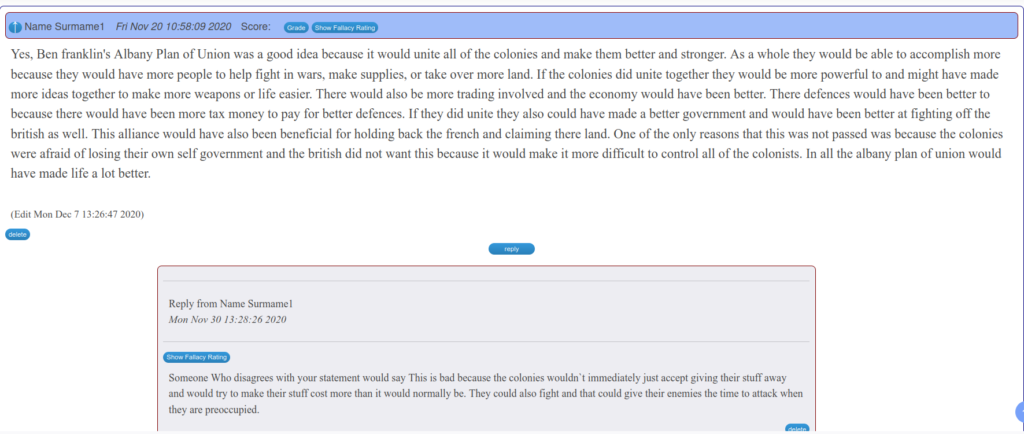
Seventh and eight graders needed training right off the bat, naturally. Accustomed to social media, their early contributions were vapid and full of emojis and “txt” language. It was important to remind them that this was a formal enterprise and that standard English conventions held. It was often difficult to get them to elaborate their ideas toward the 200-word goal set for their opening post.

I was working in a small, rural school where I would have the students from grades seven through ten, so I could see their work develop over the years.

I found it to be a good practice to offer the highest marks to those who provided evidence and cited a source. I coded a citation generator right in the forum app to encourage this.
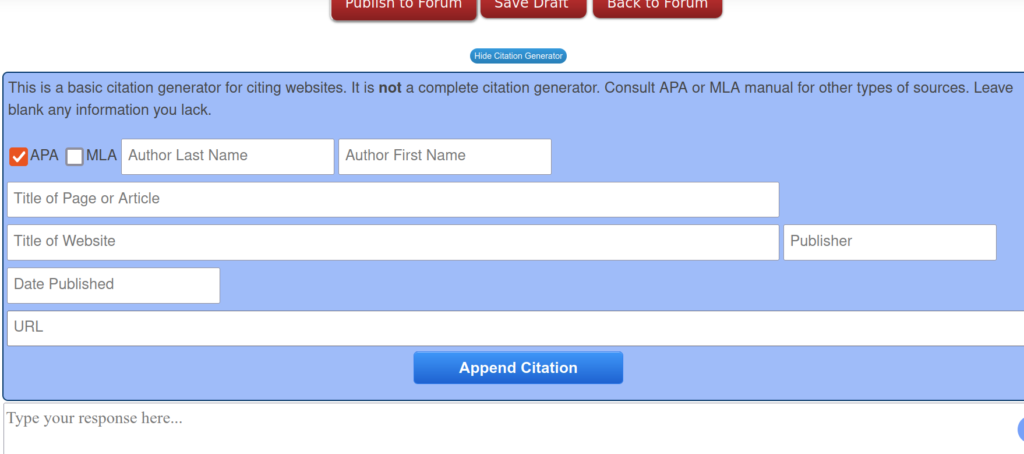
Grading the Posts
Scoring these can be labor intensive for no other reason than the layout of the forum itself. The page is designed for reading and responding, but this does not work well for scoring because there is too much scrolling and searching necessary to view posts and replies.
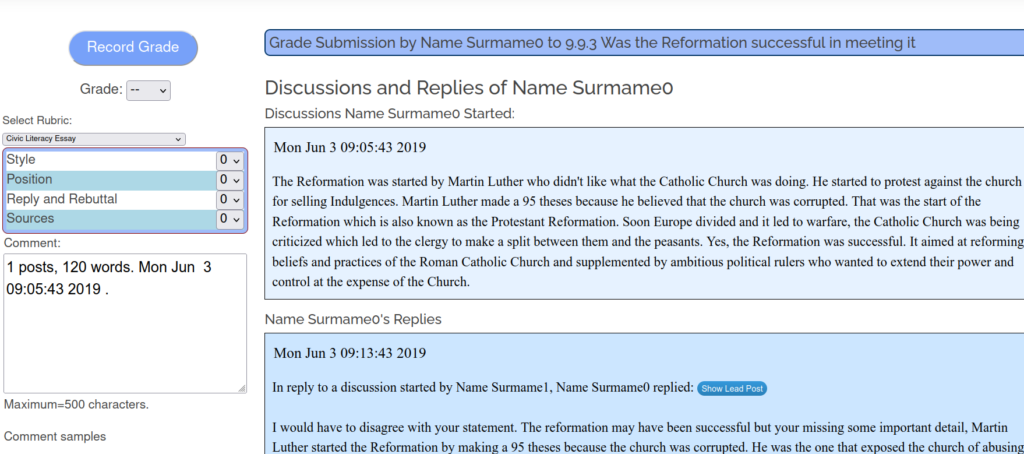
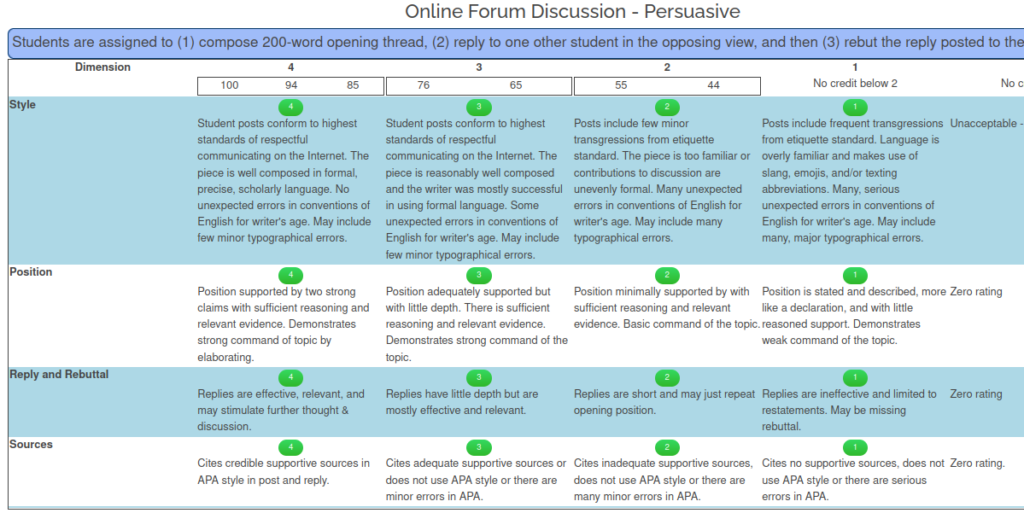
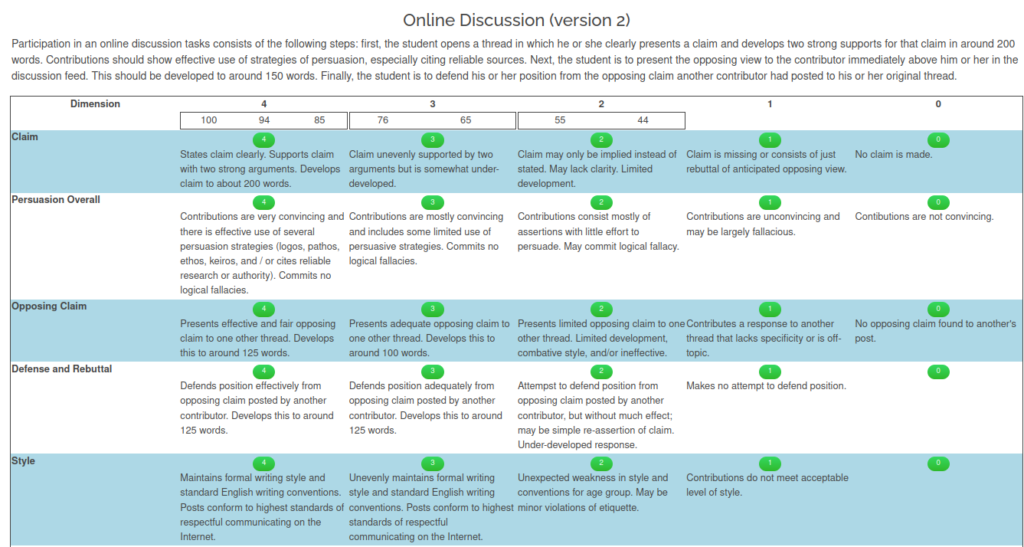
Practical Issues
The main problem I encountered in this assignment was that students would forget to complete it at first. I resolved this by assigning it in class and giving time. For example, on the first day I would present the prompt and instruct students to post their positions that class period before continuing with the day’s other work. The following day, students would have time to post their replies and finally a third day they would post their defense.
Another issue that came up was getting everyone the needed number of replies. Some posts would attract more replies than others. Some students needed a reply so they could offer defense. The solution was to modify the assignment and declare that, once one has posted, one is obliged to offer the opposing view to the person above in the forum feed.
Interestingly, these assignments also led to face-to-face spontaneous class discussions, sometimes with me and sometimes with a group. Although this may have been somewhat distracting for students in the class working on other things, we found some compromise time to allow these spontaneous interactions to proceed without disrupting the other work much. These were golden opportunities, conversations of enormous educational benefit that are so hard to artificially initiate and encourage.
I came to regard the discussion each unit as a sort of group persuasive writing effort. I included training in grade eight in persuasive writing and logical fallacies. The discussion app here at Innovation has a feature which allows readers to flag posts as committing a logical fallacy.
The Innovation Discussion Forum App is a 21st Century Learning Space
- Guardrails: The app lets the teacher monitor all conversations and to delete problematic ones.
- Training Wheels: The teacher can attach a grading rubric and sample posts. I used to post first under a pseudonym to whom the first student could reply. Additionally, weaker students can peruse the posts of stronger students in an effort to get a clear picture of the kinds of opinions that can be had on the issue.
- Debriefing: Debriefing is easily achieved by projecting the discussion screen on the from board. Students posts in this task are not anonymous.
- Assessment and Feedback: The scoring app is very efficient and highly developed from years of use. The teacher can view all pf the student’s posts and replies without having to scroll across the entire platform. Analysis tools reveal the readability of the text, how much they wrote, how analytical it is.
- Swiss Army Knife: The discussion app lends itself well to more in-depth persuasive writing assignments such as an essay.
- Locus of Data Control: The student chat submissions are stored on a server licensed to the teacher’s control. Commercial apps such as FaceBook and Twitter may be less dedicated to the kinds of privacy and control exigencies of education.
Ideas in Closing
Asynchronous discussions are great – my students and I enjoyed these tasks. It is my view that higher level thinking demanded by persuasion and debate (Bloom’s evaluation level of the cognitive domain) really enhance long-term memory of the content. I cannot emphasize enough the value of these kinds of higher-order task. Working in a 21st century learning space promotes the participation of everybody.